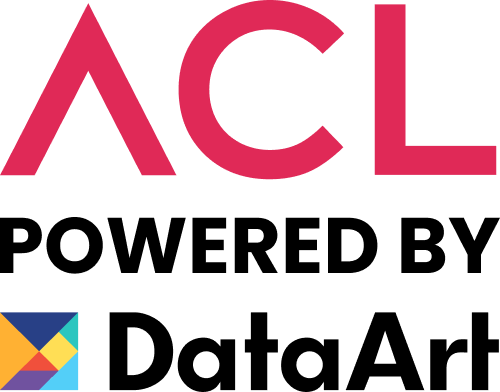Nearshore vs Offshore Software Development: Weighing the Pros and Cons.
In the evolving landscape of global software development, businesses are continually faced with the decision of choosing between nearshore and offshore models. Each model offers its unique set of advantages and challenges, making the choice highly dependent on specific project needs, budget constraints, and strategic goals. This column delves into an in-depth analysis of both nearshore and offshore software development, aiming to provide insights that can help businesses make informed decisions.
Understanding Nearshore and Offshore Software Development
Before diving into the analysis, it's crucial to understand what these terms mean. Nearshore software development refers to outsourcing software development tasks to a company in a nearby country, often within the same time zone. Offshore software development, on the other hand, involves outsourcing these tasks to a distant country, usually with significant time zone differences. One of the primary reasons businesses outsource software development is cost reduction. Offshore development, particularly in countries with lower labor costs, can offer significant savings. However, nearshore development, while potentially more expensive than offshore, can still be cost-effective compared to onshore options and offers the added advantage of reduced travel costs and easier onsite visits.
.png?width=1024&height=768&name=Job%20Interviews%20Dos%20And%20Donts%20Comparison%20Graph%20(3).png)
Communication and Cultural Alignment
Effective communication is key to the success of any software development project. Nearshore development often offers smoother communication due to fewer language barriers, cultural similarities, and overlapping working hours. Offshore development can pose challenges in these areas due to greater time zone differences and cultural disparities, which can sometimes lead to misunderstandings and project delays.
Quality and Expertise
Both nearshore and offshore models can provide access to a vast pool of talent and specialized expertise. However, the quality of the output can vary depending on the region and the specific vendor. Businesses need to conduct thorough due diligence to ensure that their chosen outsourcing partner has a track record of delivering high-quality solutions.
Project Management and Control
Maintaining control over the project is another critical aspect. Nearshore development allows for closer collaboration and easier integration with in-house teams, which can lead to better project control. Offshore development might require more robust project management strategies to mitigate the risks associated with distance and less frequent communication.
Agility and Responsiveness
In today’s fast-paced technological environment, being agile and responsive is crucial. Nearshore teams, due to their proximity, can often align more closely with the client’s schedules, making it easier to adapt to changes quickly. Offshore teams, despite being adept at handling complex projects, might face challenges in rapid responsiveness due to time zone differences.
RECENT BLOG POSTS!
- Agile Methodology: Transforming Nearshore Software Development
- Selecting the Ideal Nearshore Software Development Partner!
- The Future of Nearshore Software Development: Navigating the Horizon
- LatAm's Rise in the Nearshore Software Dev: Balancing with new trends
- Case Studies Nearshore Software Dev: Real-World Successes & Strategies
The Rising Appeal of LatAm in Nearshore Development
Latin America (LatAm) has increasingly become a focal point in the nearshore software development landscape, particularly for North American businesses. This region offers a compelling mix of cost-effectiveness, skilled labor, and cultural proximity that is hard to match. The time zone alignment with North American time zones is a significant advantage, facilitating real-time collaboration and agile responsiveness to changing project needs.
Additionally, the growing tech education and bilingual capabilities in countries like Peru, Chile, Colombia, and Mexico, have led to a surge in highly skilled software developers who are adept in the latest technologies and methodologies. This blend of talent and accessibility is positioning LatAm as a preferred choice for nearshore software development, providing an optimal balance between cost savings and quality output.
LatAm's Evolving Ecosystem in Software Development
The software development ecosystem in LatAm is rapidly evolving, driven by both governmental initiatives and private sector investments in technology. Many LatAm countries are actively promoting their IT sectors, leading to an increase in tech hubs and innovation centers. These initiatives are not only enhancing the technical skills of the workforce but are also fostering an environment that is conducive to cutting-edge software development.
As a result, businesses opting for nearshore development in LatAm are not just accessing a cost-effective labor pool, but are also tapping into a rich source of innovation and creativity. This evolving ecosystem, combined with a keen understanding of North American business culture, makes LatAm an attractive and strategic choice for companies looking to outsource software development nearshore.
-1.png?width=488&height=417&name=Untitled%20(1)-1.png)
In conclusion, both nearshore and offshore software development have their merits and drawbacks. The choice between the two depends on various factors, including cost constraints, communication preferences, project complexity, and the need for agility. Businesses must carefully assess their specific needs and conduct comprehensive research on potential partners to ensure that their chosen outsourcing model aligns with their strategic objectives and project requirements. By doing so, they can leverage the benefits of global software development while minimizing the challenges.
Recent Posts
Get ahead of the competition with ACL's skilled professionals. We specialize in handling complex projects and delivering innovative and cost-effective solutions. Don't miss out, reach out to us for a free discovery call!

-2.png)





